
Street of Maria Theresa, the full name of Maria-Theresien-Straße, one of the main and busiest streets in the historical center of Innsbruck, the second - Herzog-Friedrich-Straße, which is the main axis of the old city of Innsbruck.
The street was named in honor of the Austrian Empress Maria Theresa.
Maria-Therese-street was formed when the city of Innsbruck, founded in 1180, shortly began to expand, and has gone beyond the old city - outside the city walls and moat. The new part of the city at that time were the suburbs developed along the arterial road leading South to Vilano (now part of Innsbruck) and was known as "Neustadt" or New town (nova civitas / "Neustadt").
Soon many of the nobles began to build their houses near the gate, outside the old city. As it became more practical due to its proximity to the Royal court and at the same time, the possibility to build a new house outside the crowded narrow streets. New homes are more comfortable and bigger than their old one in the old town. Later, some new houses have been converted into magnificent palaces in the Baroque period, which can be seen today.
There began to develop the street of Maria Theresa, and after it and all the adjacent "New city".
During the history the street of Maria Theresa lengthened and transformed as population growth and construction of new buildings and, ultimately, acquired its modern borders and became one of the main streets of the city of Innsbruck.
Being the main street of Innsbruck, the Maria-Theresien-Strasse is often used for marches and rallies.
Currently Maria Theresa Strasse, has a length of nearly 500 meters, slightly curved shape and crosses the main part of the historic city centre in the direction from North to South.
Street originates from the intersection of Marktgraben and Burggraben (former city moat) and leads South to the arc de Triomphe, where he met with the streets Salurner starsse, Leopoldstrasse and Maximilianstrasse.
Along the street there are historic buildings, most of which are represented by buildings in the Baroque style, there are boutiques, shops, including two shopping centers, cafes, restaurants and accommodation facilities.
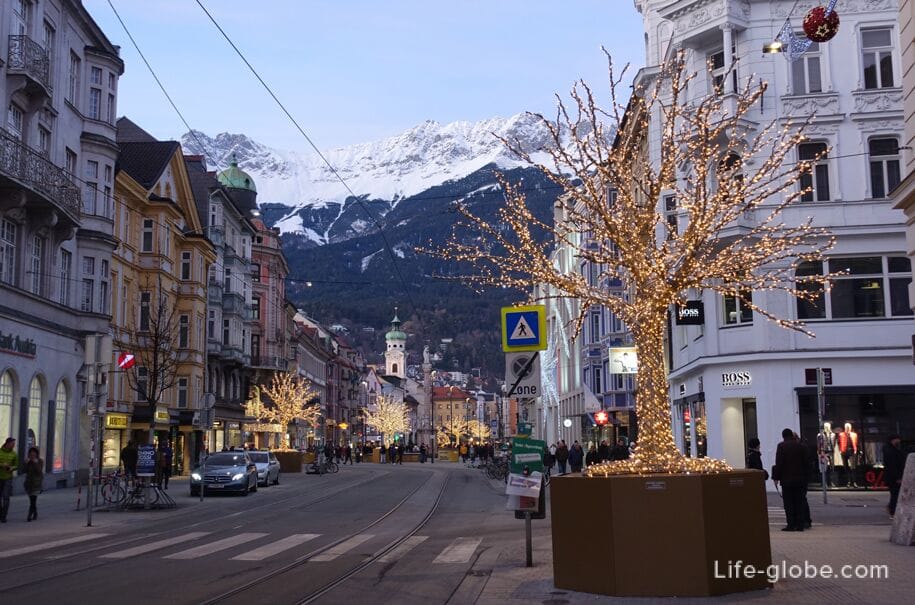
Conventionally, the Maria Theresa street can be divided into two sections:
- North - a completely pedestrian zone, which was rebuilt from 2006 to 2009;
- South having carriageway with footpath on both sides.
Each part of the street is beautiful and varied in its own way.
The Northern part of the Maria Theresa street is a pedestrian zone, the length of which is just over 200 metres.
It stretches from the street Anichstrasse to the streets Marktgraben and Burggraben, for which there is another pedestrian street, which is located in the old town is the Herzog - Friedrich-straße. The Herzog-Friedrich-Strasse and the pedestrian part of the Maria Theresa Strasse form the historical and tourist core of the city center of Innsbruck. Read more about street Duke Friedrich...
The view of the street, the Herzog-Friedrich-Strasse, the street of Maria Theresa Strasse
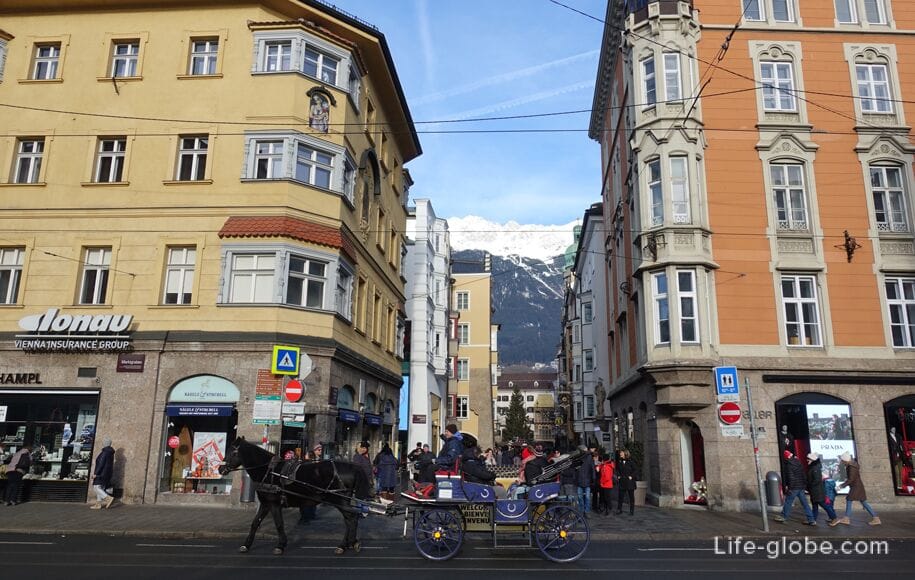
The Northern part of the street of Maria Theresa is the oldest of its plot. Here, on both sides of the street are bright and elegant historic building with elegant Bay Windows on the first floor are located shops, boutiques, cafes and restaurants. In the center of the street are places to stay.
On the eve of Christmas and New year, this part of the street turns into a Christmas market, where stalls of food, drinks, Souvenirs, local Handicrafts and, of course, festive paraphernalia. Read more about all Christmas markets in Innsbruck...
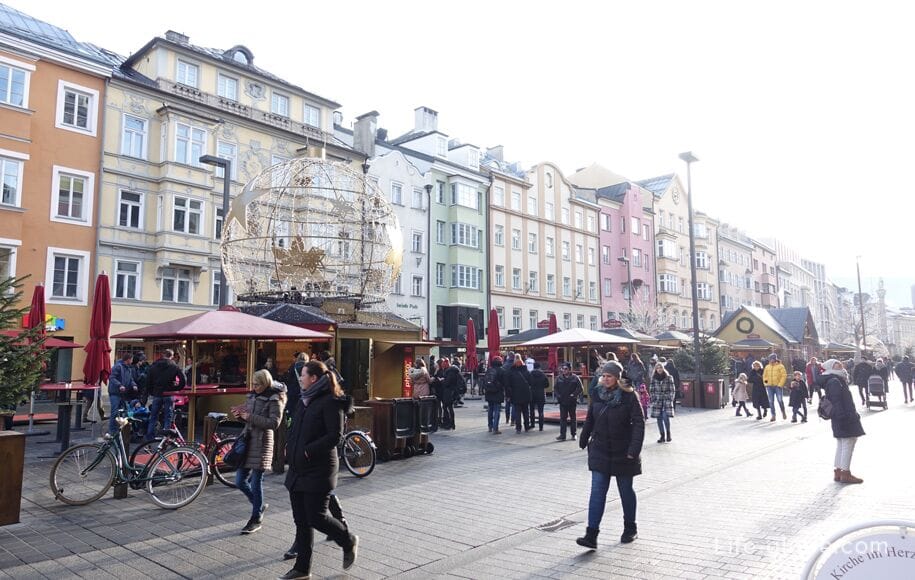
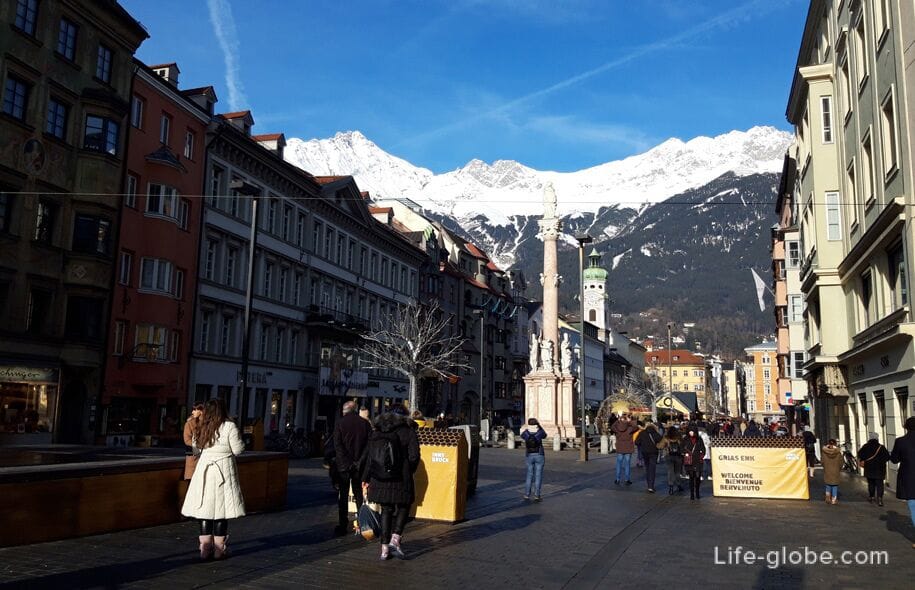
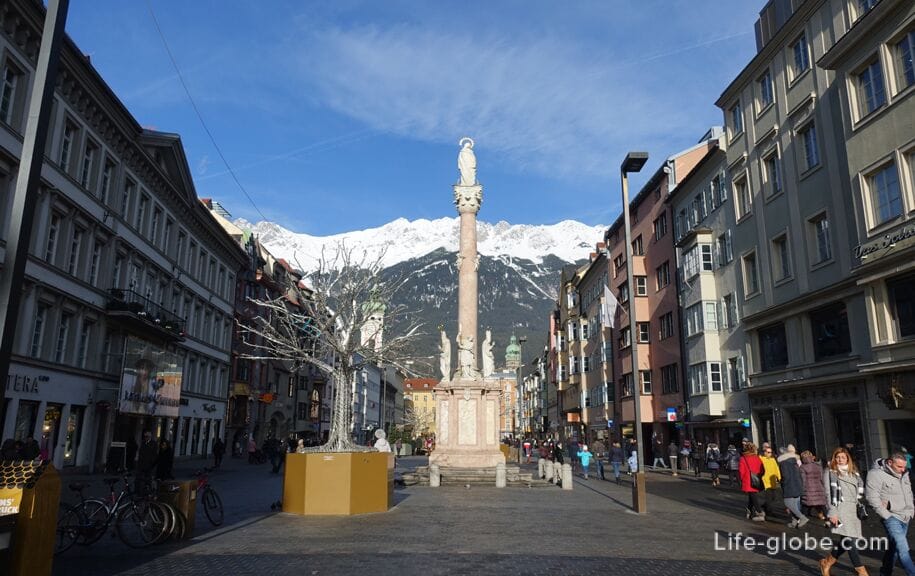
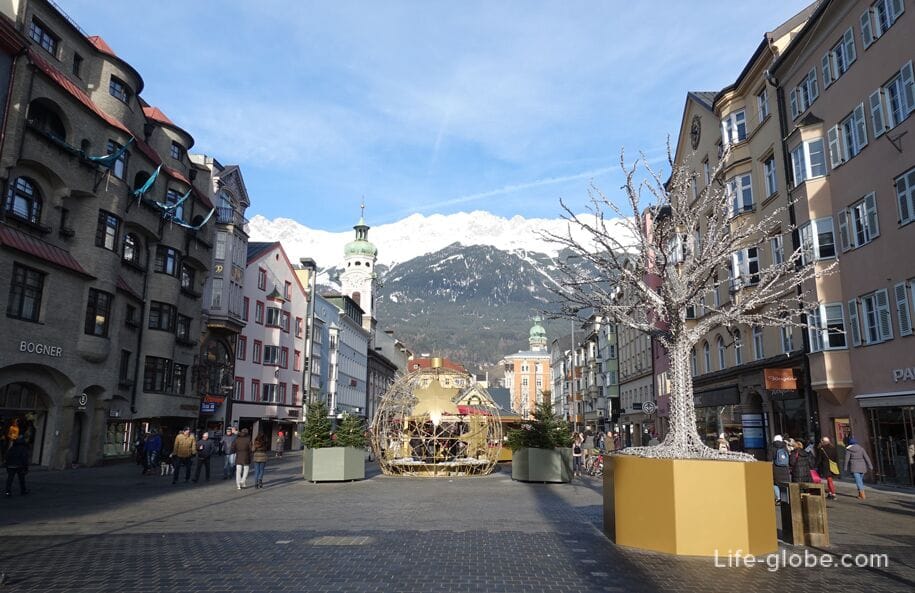
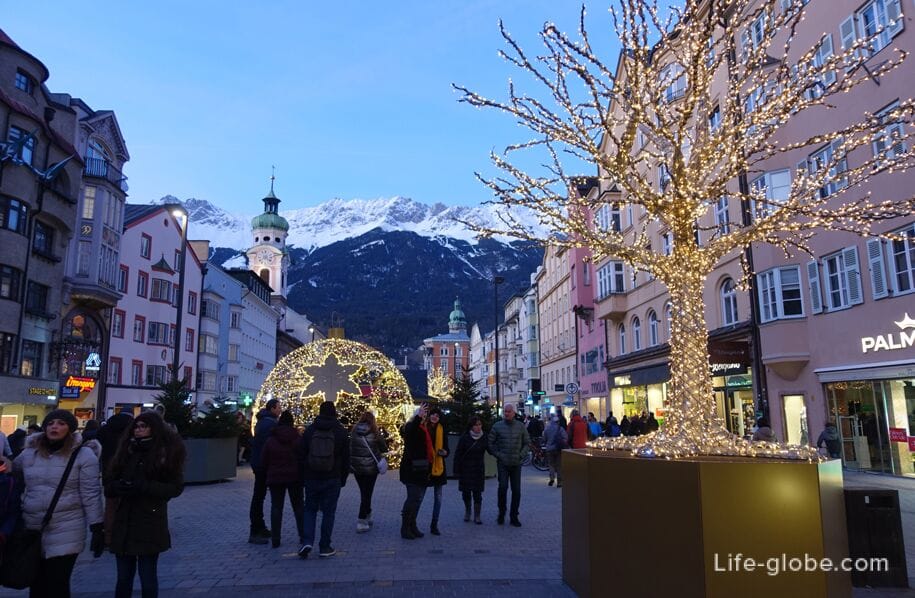
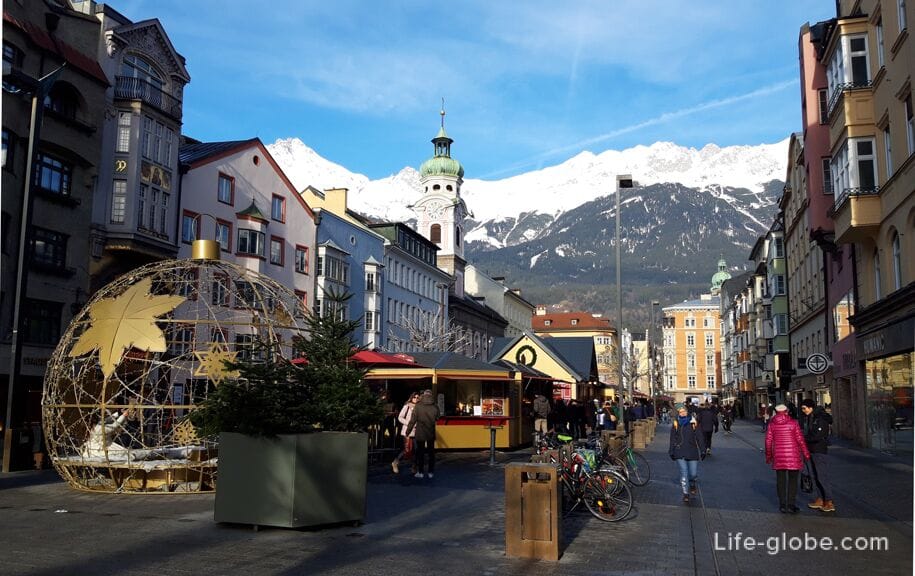

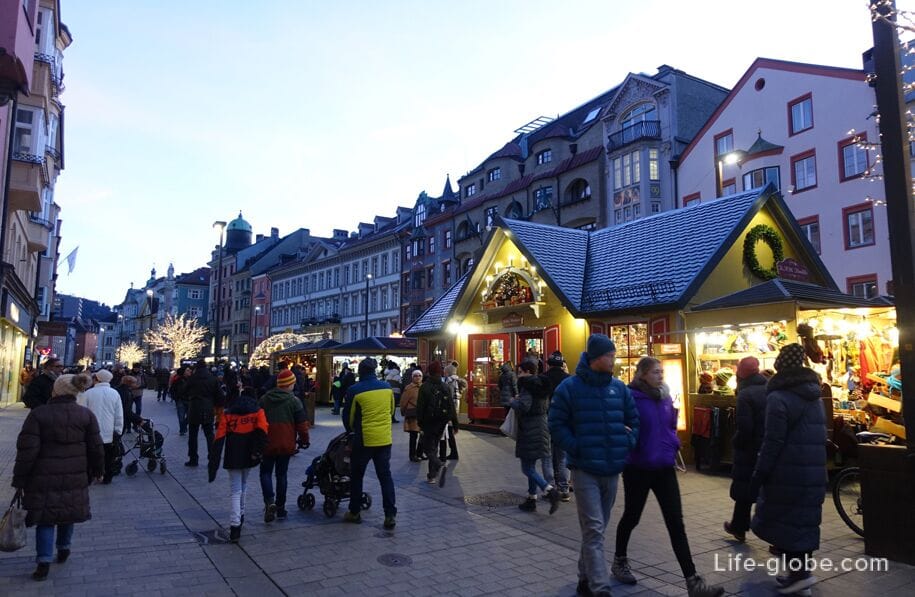

Roman Catholic Church of the Holy spirit (Spitalskirche zum Heiligen Geist), which was first mentioned from the 12th century (1320 years) as a chapel at the hospital and from 1381 it was called "Church." In those days the Church was connected with the hospital located, for fear of the spread of infection, outside of the old city (near the gate).
The Church was rebuilt in the years 1700-1701 in the Baroque style at the initiative of Johann Martin Gumpp Older on the site of the previous Gothic building.
During the Second world war the Church was damaged and was subsequently rebuilt.
Today the old hospital and adjoining the cemetery already there. The Church exterior has also changed.
In parts of the Church is remarkable: carved doors, moldings, high altar with a Gothic cross and frescoes that date back to the 1960-ies.
The old hospital Church is located at the address: Maria-Theresien-Straße, 2.
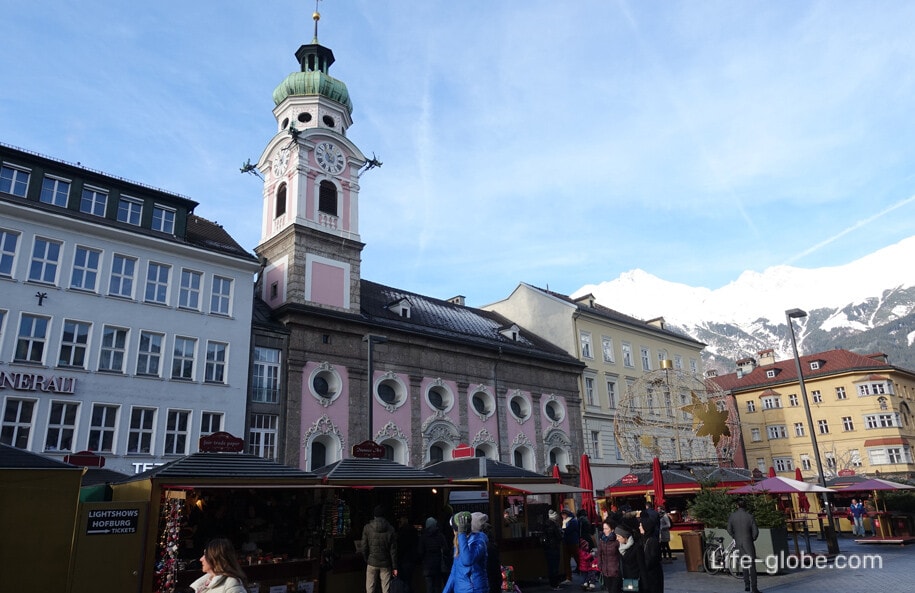
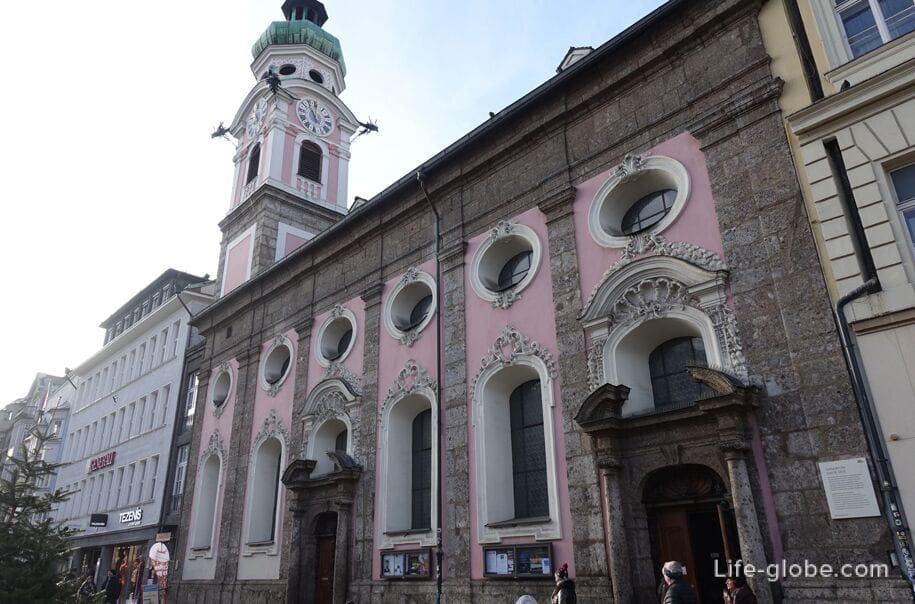

Gasthaus Alt Insprugg - house of 15th-16th centuries, the façade of which you can see the numbers "1577", rebuilt in Baroque and in 1906.
The Alta Einspruch and two nearby buildings, located on the North side of Gasthaus Alt Insprugg, are the most vivid and attention-grabbing in the Northern part of the street of Maria Theresa.
Address home: Maria-Theresien-Straße 16.

The St. Anne's Column (Annasäule) stands in the center of the street and is one of the symbols and one of the main attractions of Innsbruck.
The column was erected after the war for the Spanish heritage (Bavarian invasion), as thanks to higher powers for victory. The enemy was defeated, and banished the last of the Bavarian troops on July 26, the feast of St. Anne. Hence the name "the column of St. Anne".
26 Jul 1706 column-the monument was blessed. For centuries the column several times restored.
The column itself is made of red marble. The upper part is crowned by a statue of the Madonna (virgin Mary) with a halo of Golden stars. In the center column you can see sculptures of small angels, and in the lower part there are the sculptures of four saints: Saint Anne, mother of Mary; the Holy Kasian, patron of the diocese Saben; the Holy Vigilia, patron of the diocese of Trento and Saint George is the patron Saint of the Tyrol. Read more about the column of St. Anne...
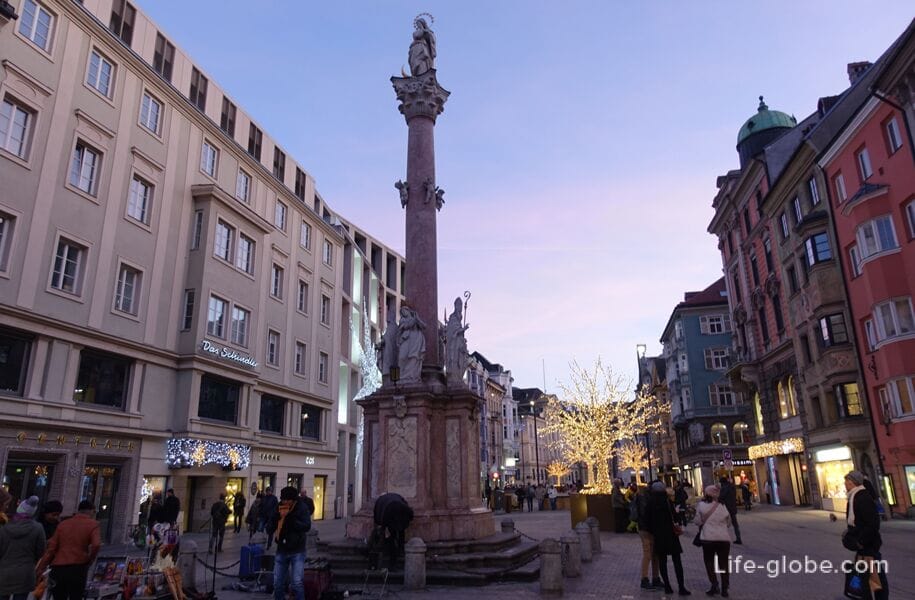
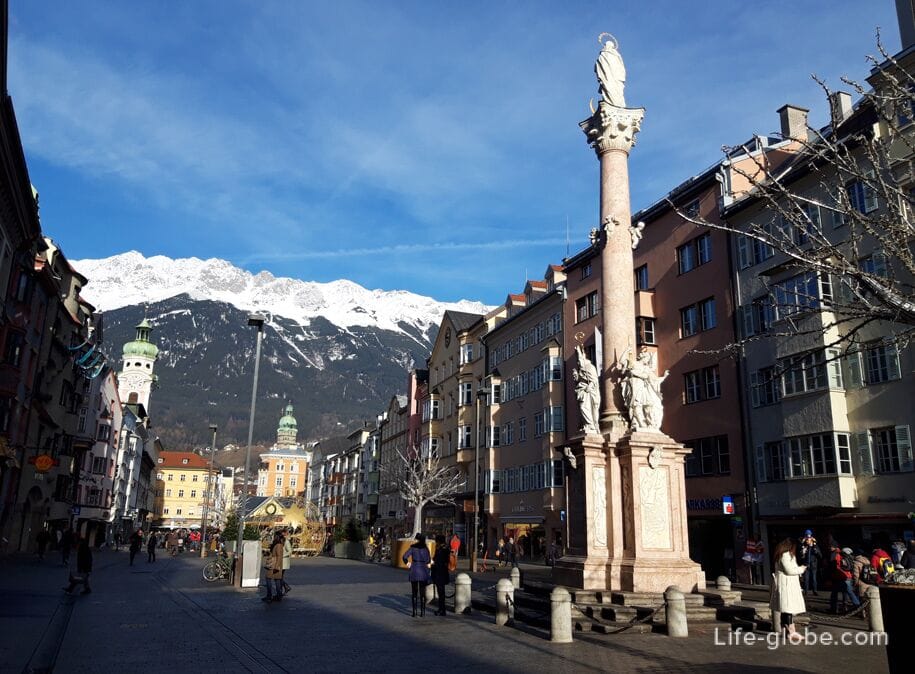
Three original medieval townhouse that was designed by Johann Martin Gumpa, was converted into the Palace Konigl (Palais Künigl).
In 1847 the building was purchased by the Viennese hotelier Ernst Manicom in 1848-1849 redesigned in the classical style and transformed into the hotel d Autriche. Due to competition from new hotels, the hotel d Autriche ceased to exist in 1876.
In 1882 the building was bought by the seller paper in Innsbruck Leonard lang, who in 1897 donated the building to the city of Innsbruck as a New town hall (Neues Rathaus). November 10, 1897 the city Council moved from old town to new town hall. The building of the old town hall still exists today, it is, together with adjacent Urban tower where the observation deck is located in the centre of the old town. Read more about old town hall and the City tower with an observation deck...
From the mid 1980-ies of the planned extension of the town hall, but in the end the idea was implemented in the project of Innsbruck in cooperation with private investors. Joint work granted Guildhall expanding and partially new architecture, complementing the town hall design of glass and steel, but also gave the building a completely new functions. In 2002, the opening of the town hall complex, designed by the French architect Dominique Perrault.
Now the town hall, in addition to new facilities for the city administration, includes 4-star design hotel The Penz restaurant-a rooftop garden, shopping Mall "RathausGalerien", an underground Parking and a rooftop bar (7th floor) with panoramic 360-degree view.
Address new town hall: Maria-Theresien-Straße 18.


Another shopping center, Kaufhaus Tyrol, built by architect David Chipperfield in 2007-2010, glass and concrete elements with white cement and marble, on the site of a historic Department store, located close to the New town hall, at the address: Maria-Theresien-Straße 31.
Near shopping centre, Kaufhaus Tyrol, at the confluence of street Anichstraße, the pedestrian street of Maria Theresa ends, then the street became a road, with sidewalks on both sides.
Photo street Anichstrasse
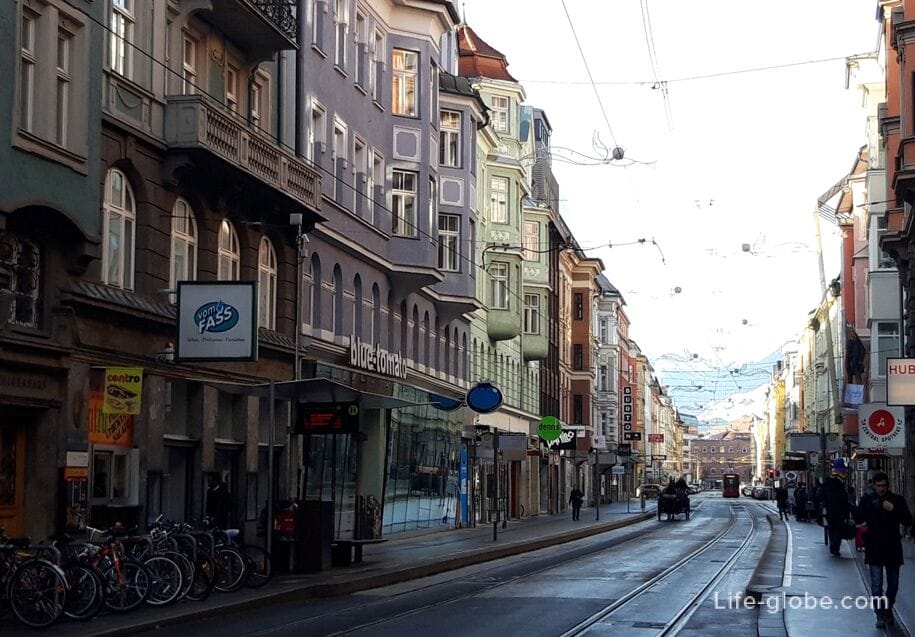
The southern part of the Maria Theresa Strasse is an important axis of public transport across the street are all city tram lines and many bus lines.
The Northern part of the street of Maria Theresa originates from the streets Anichstraße and stretches approximately 300 metres from the arc de Triomphe.
Along the street mainly monumental buildings of exquisite Baroque style.
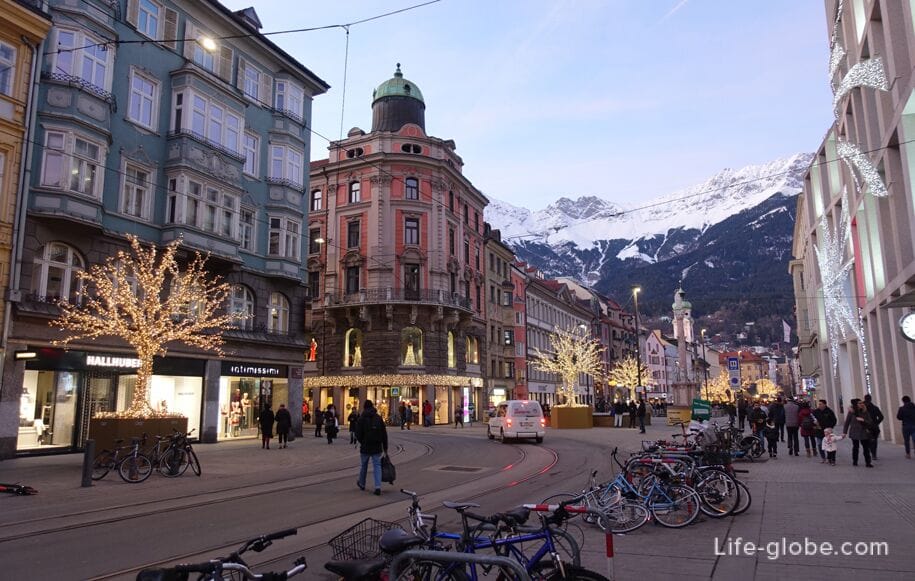
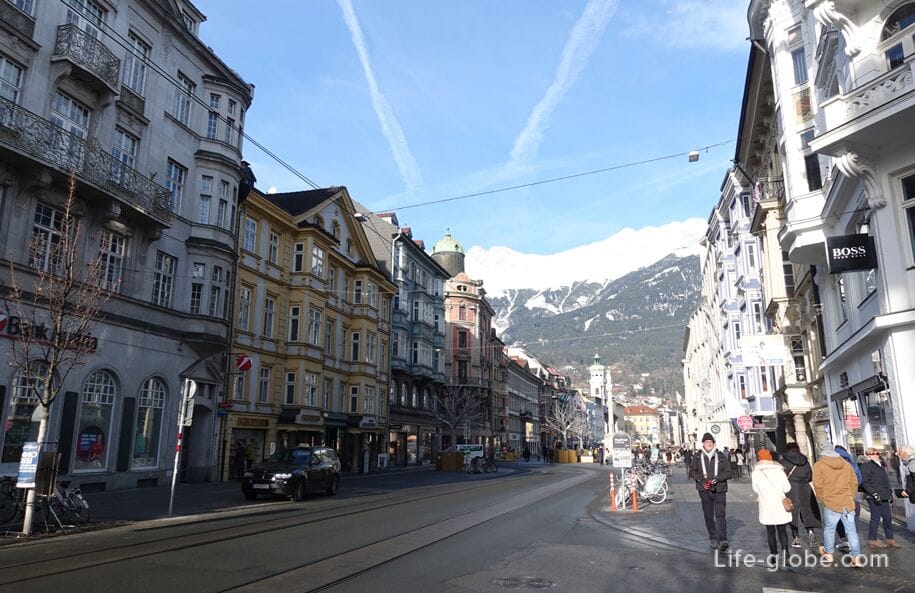

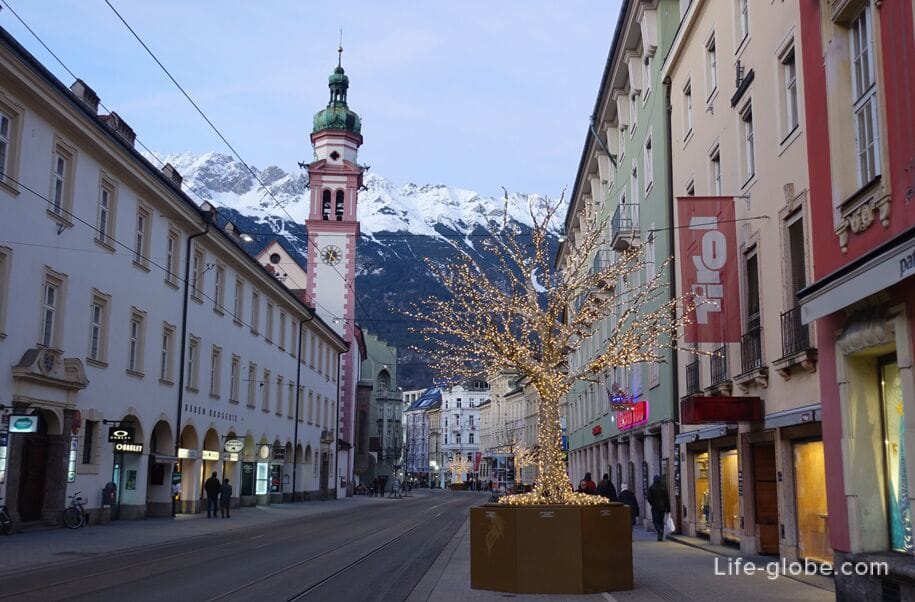
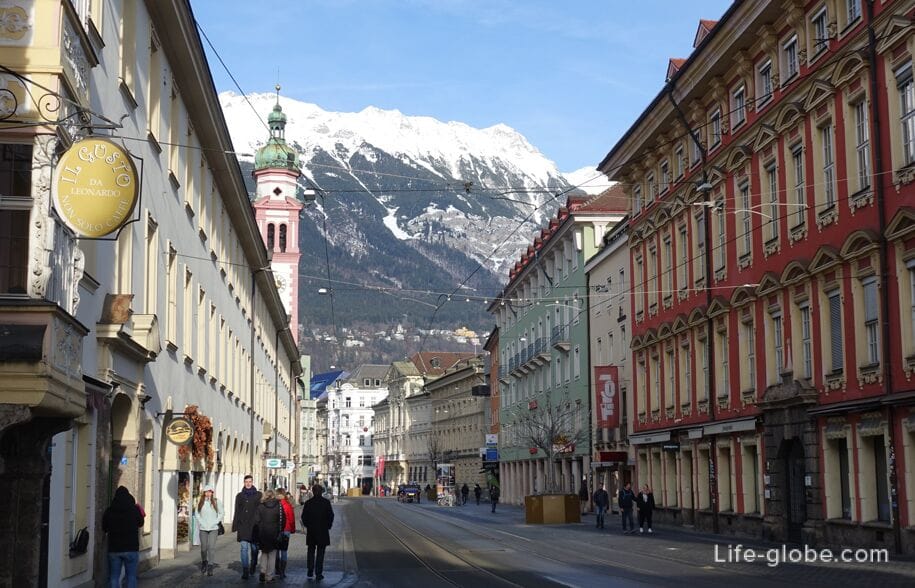
The building is located at the address: Maria-Theresien-Straße 36, notably two rows of Bay Windows, Central openwork balcony with different size and sculpture of a bird of prey that adorns the roof of the house.

The Palace belonging to the count von Trapp in 1804, was created from two buildings that were destroyed by fire in 1620 and then rebuilt. In the southern part housed the hotel "der Sonnen Inn", and the Northern part was reconstructed by Baron Berchtold von Wolkenstein as residence "Wolkenburg".
In 1700 work began to transform the building into the Palace in the Baroque style.
Address of the Palace Trapp: Maria-Theresien-Straße 38.
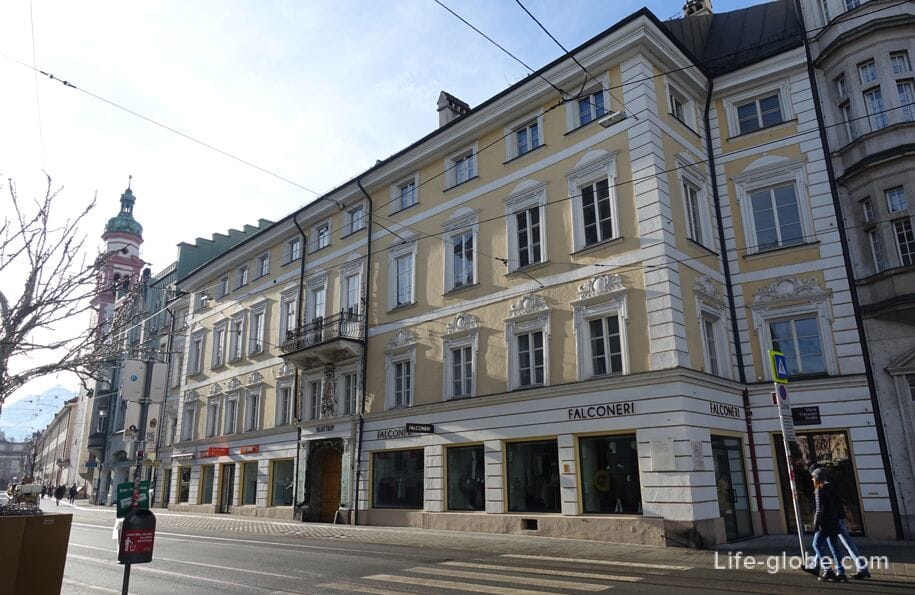
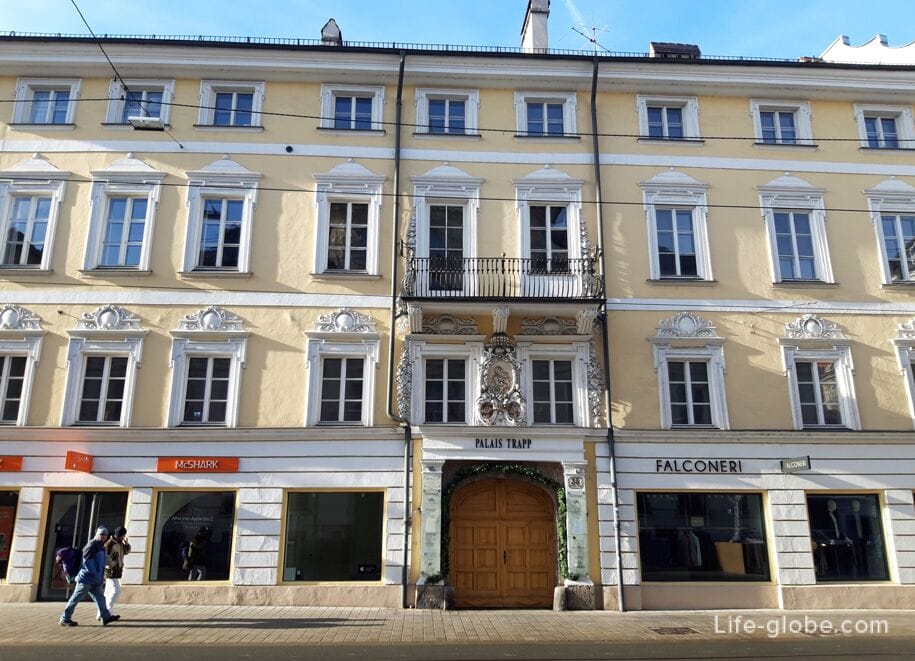
The building was erected around 1680 by Johann Martin Gump to Franz Anton Count Troyer in the Baroque style.
Address of the Palace: Maria-Theresien-Straße 39.
The photo Palace Troyer-Spaur left + corner of the building on the right
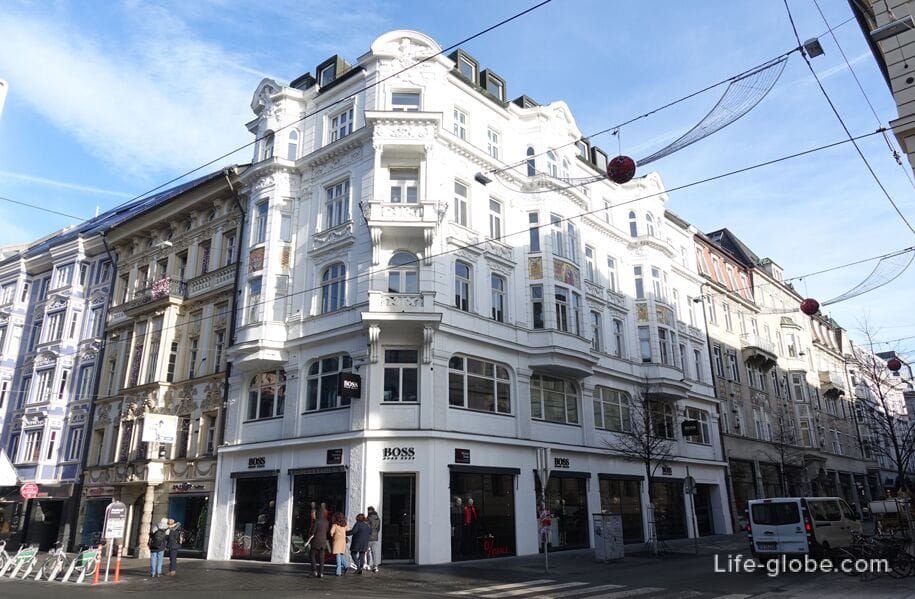
The building was built between 1725 and 1728 years of court architect Georg Anton Gumpa as a monumental building and the residence of the Tyrolean Parliament.
This structure is one of the most magnificent Baroque buildings in Innsbruck. The Palace consists of three wings, the fourth side is the chapel which faces the courtyard.
The interior of the building is especially beautiful: a staircase leading to the upper floors; holes in the walls near the staircases decorated with statues of ancient gods; arched niches with statues depicting the Emperor Leopold I, Archduke Leopold V, etc.; doors, decorated with carving; the ceiling, decorated with stucco; and a hall of meetings of the Committee, with the Rococo and the meeting hall of the state Parliament (meeting room), walls and ceilings are decorated with frescoes which depict scenes from the old Testament with reference to the Tyrolean landscape (the frescoes were painted in 1734).
The old country house address: Maria-Theresien-Straße 43.

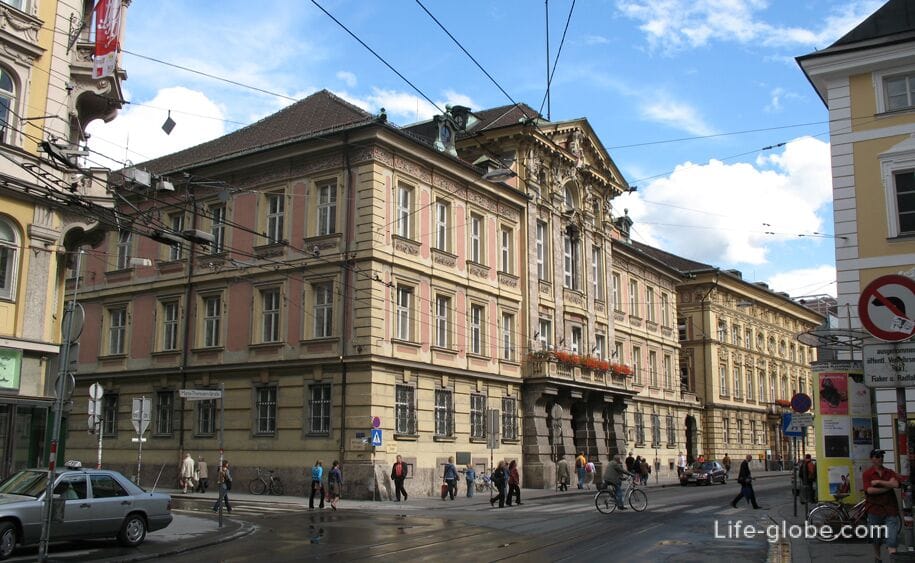
The chapel of the old country house
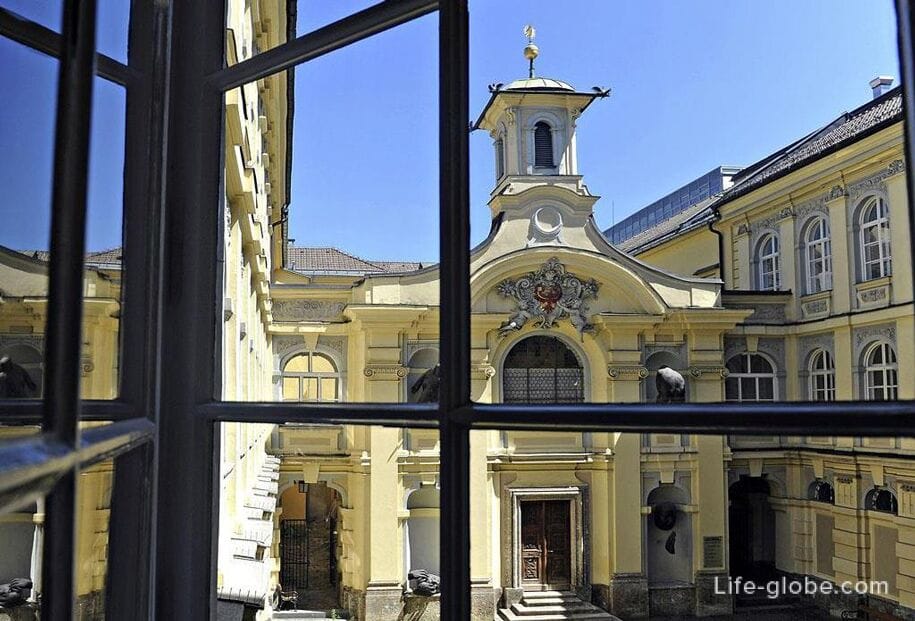
Conference hall of the state Parliament
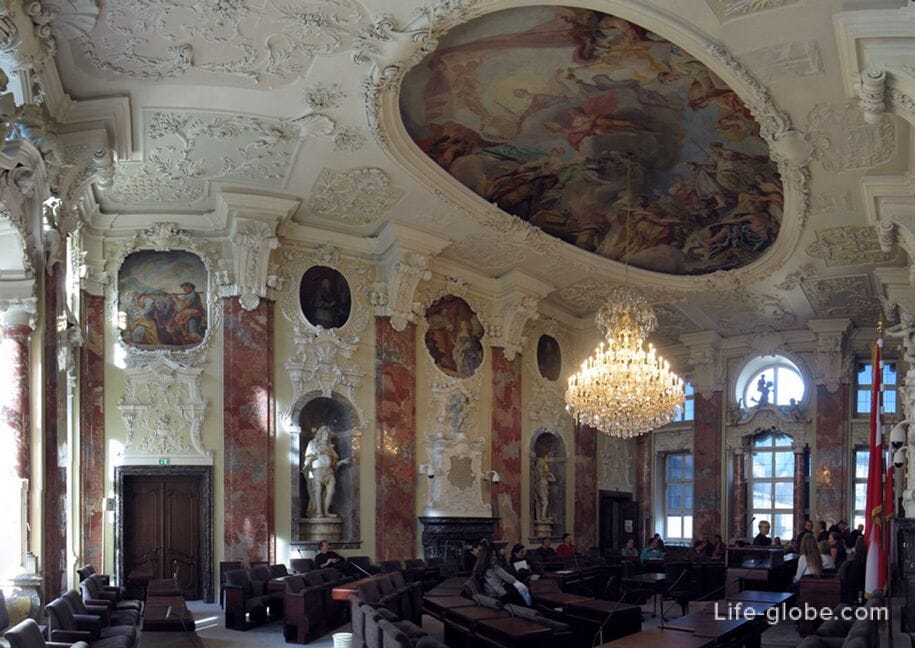
Hall Committee meetings
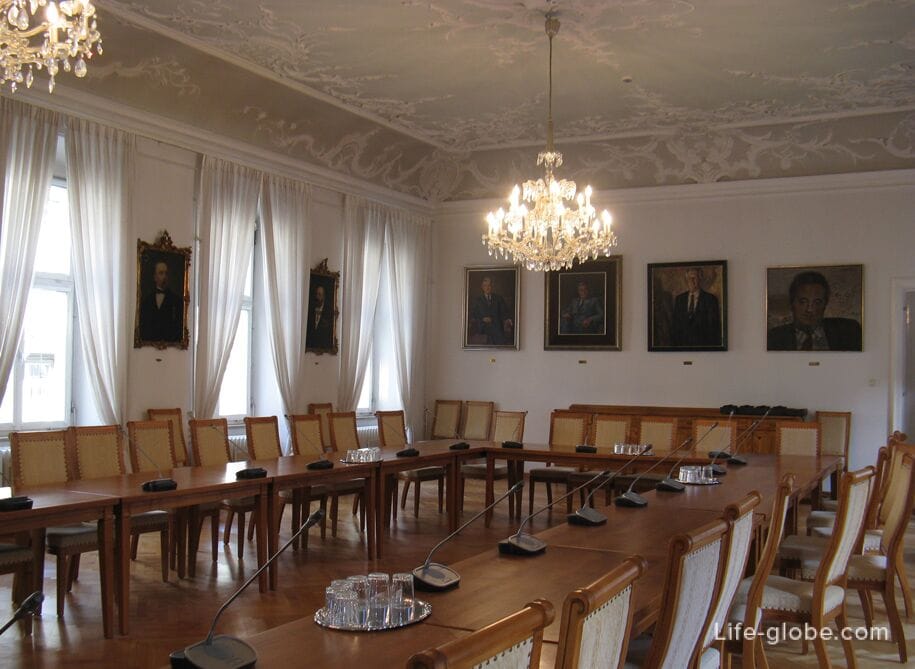
Building Taxispalais was built about 1680, probably according to plans by Johann Martin Gump Older for count Hans Otto Fugger as a Palace complex in the Baroque style after the Italian model.
In 1784 the house was got by postmaster General Joseph Sebastian von Thurn and taxis, who used the building not only as a residence but also as a post office.
In 1905, the Palace belongs to Tyrol. Today in its walls are the offices of the state administration and an art gallery. Website gallery: taxispalais.
Address of the Palace: Maria-Theresien-Straße 45.
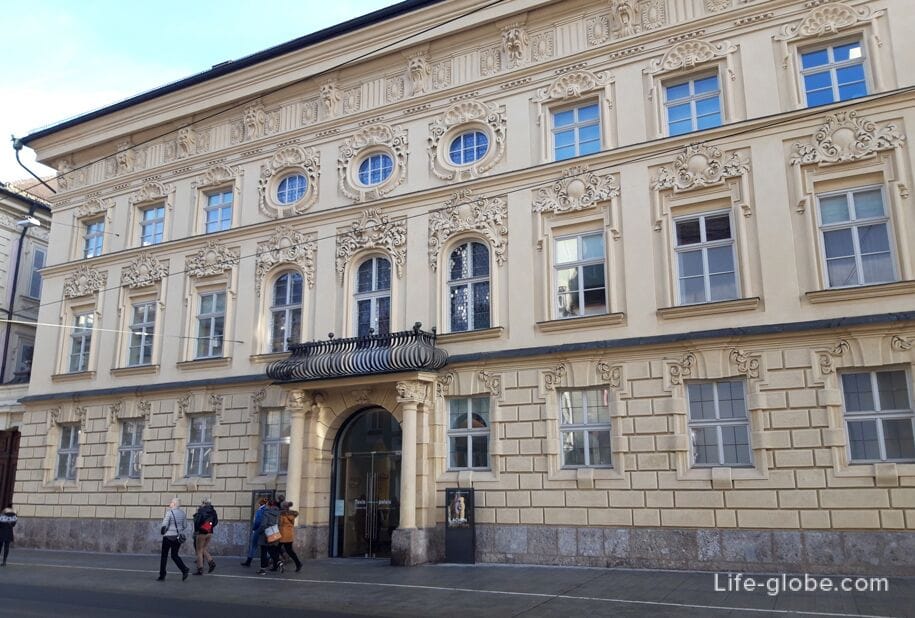
The building is located at the address: Maria-Theresien-Straße 40 it is noteworthy corner Bay window, Windows, decorated with notched ornaments and a Central painting of the facade, which is crowned by a pointed "tip", the speaker is up against the main roof.
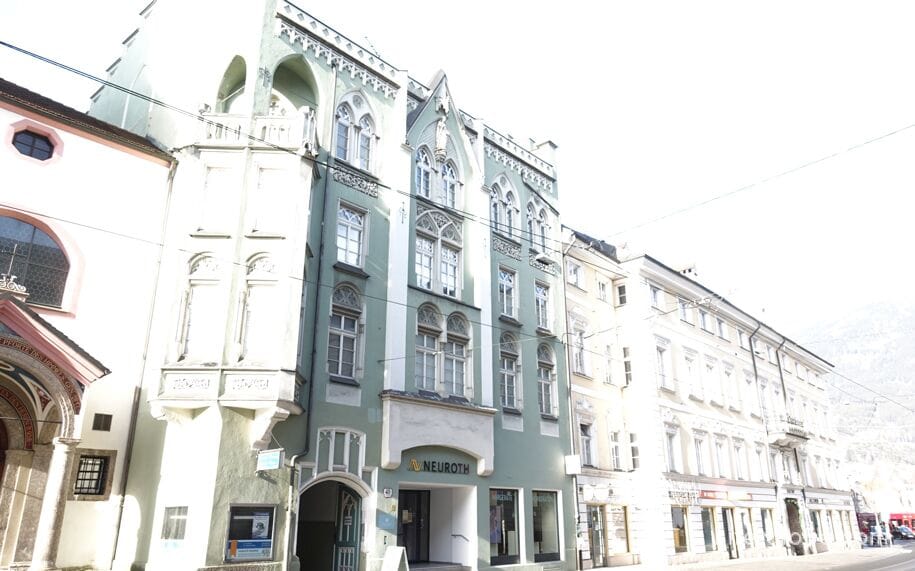
Servetsky St. Joseph's Church (Servitenkirche zum hl. Josef) with the adjoining convent was founded in 1614 by the widow of Archduke Ferdinand II of Anna Katharina Gonzaga, who also drew the order of Servico in Innsbruck. She and her daughter Mary, buried in the monastery.
The monastery flourished in the 17th century thanks to funding from the Habsburg family. The first building of the monastery and the Church burnt down in 1620. Later the Church was rebuilt and consecrated (1626 year).
Later extensions touched the side of the chapel (1722) and the chapel Peregrine (1731). The Baroque tower of the Church was erected in 1899 by Johann Wunibald Deininger. The building was heavily damaged by an air RAID on 15 December 1943. After 1945 the Church was rebuilt, the order came back and since 1947 is watching over the newly established parish of St. Joseph.
Today the Church is a simple long building parallel to the street of Maria Theresa, with the South tower in the Baroque style and the chapel serving. Inside you can see elements of several eras, from the early Baroque to contemporary works, in particular: the main altar, organ, thin moldings over marble pilasters and painted on the ceiling.
The frescoes on the ceiling and the mural relief on the outside wall of the chapel was created in 1947 and 1953 by the Austrian sculptor and artist Hans Andre.
The address of the Church: Maria-Theresien-Straße, 42.
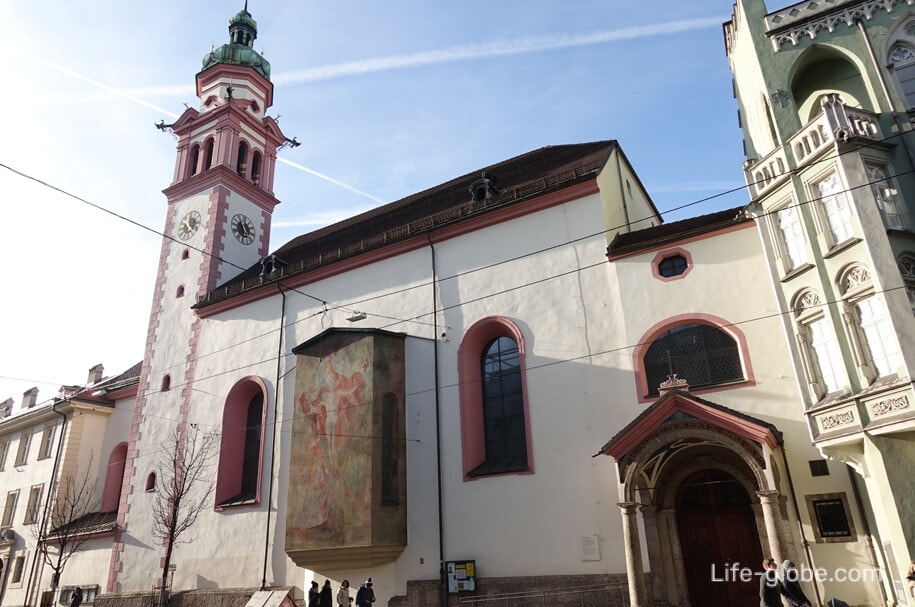
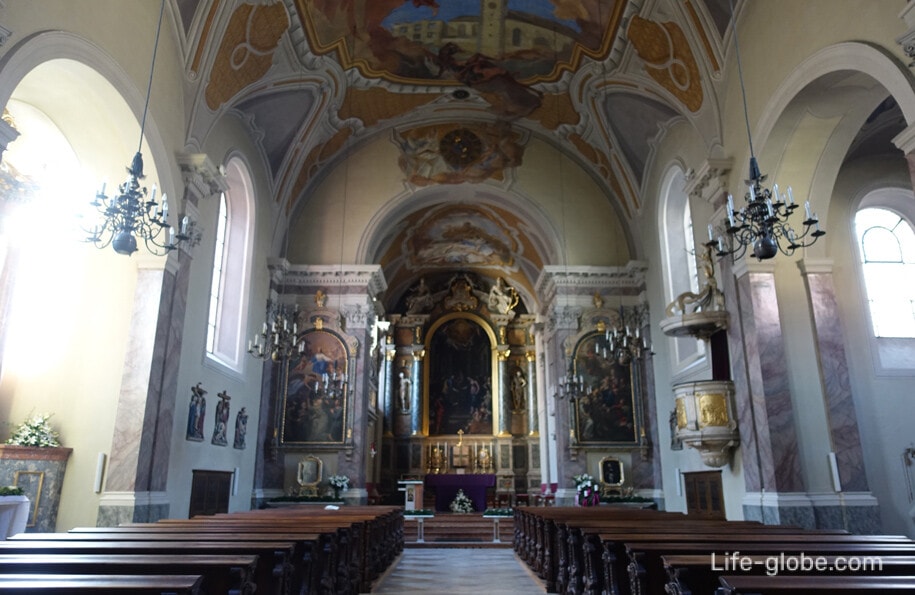
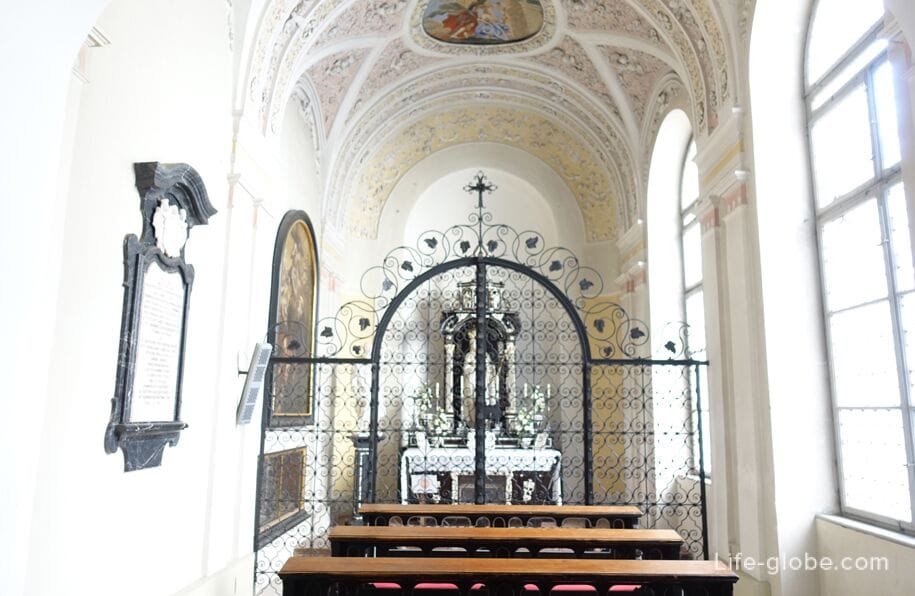
Peterlongo, the former Palace of Sarnthein (Palais Sarnthein), became a Palace in 1680-ies, when the court architect Johann Martin Gumpp to count Santana combined and transformed the two old town houses of the 16th century, the Palace.
Since 1842, the building was in private ownership, and was home to the Tyrolean arms factory and sports shop in Peterlongo. After the building was severely damaged, it was restored as close as possible to its original construction in 1956.
Address of the Palace: Maria-Theresien-Straße 57.
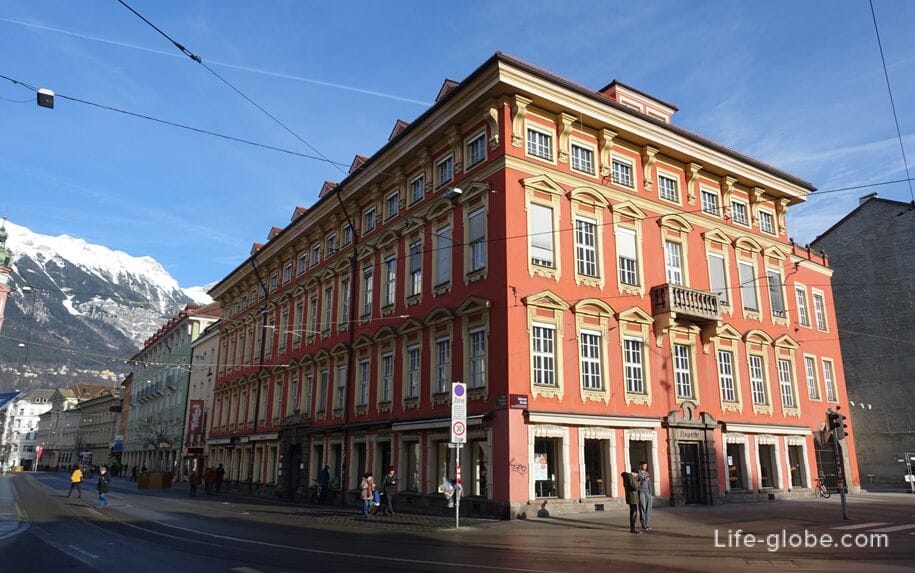
The last two buildings, located on the West side of the street of Maria Theresa, numbered 44 and 46 have a very bright appearance and contrast with each other.
One building is painted pink and has protruding balconies, decorated with light stucco and the stepped top of the facade. On the first floor of the building is a restaurant.
The second building in the Baroque style is less flashy and more simple, painted green, and within its walls is a family-run 3-star hotel Goldene Krone Innsbruck with views of the arc de Triomphe.

The end of the street of Maria Theresa is crowned by the arc de Triomphe (Triumphal arch) in the Roman style.
The arch was erected by order of Maria Theresa in the 18th century, when the Empress had planned his son's wedding of Archduke Leopold with a Spanish Princess Maria Ludovico.
At that time were made many changes in the urban environment, including was ruined medieval city gate at the entrance to the old town of Innsbruck, partly of stones which they erected the Triumphal arch.
In addition to the main entry of character in the historic part of the city, the triumphal arch also serves as a reminder of joy and sorrow at the same time. The fact that during the preparation for the wedding, on 18 August 1765, the husband died, the Empress and the father of the groom.
For this reason, arch has two "face": on the North side of the gate depicts a memorial to the memory of the sudden death of the Emperor, and the South is decorated with festive and more colorful motifs with reliefs dedicated to the wedding. Read more about triumphal arch...
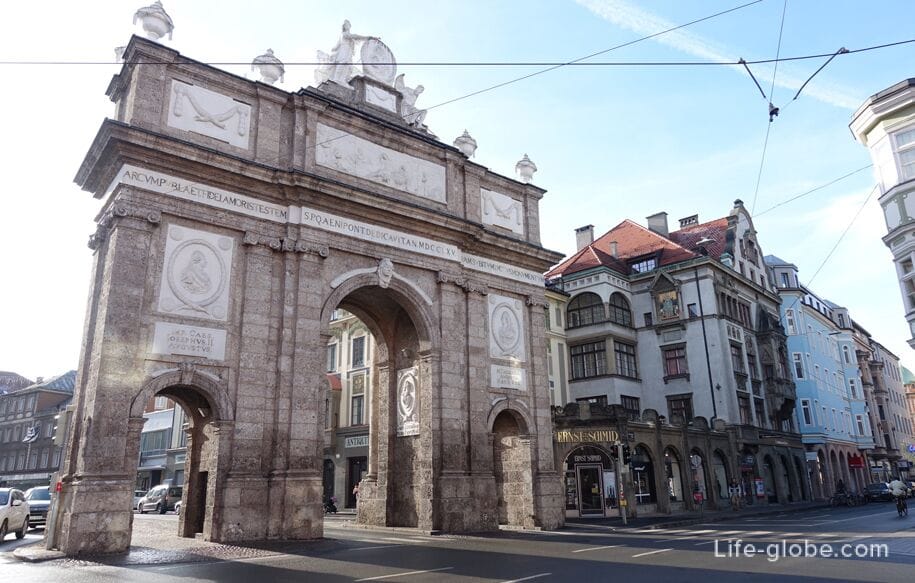
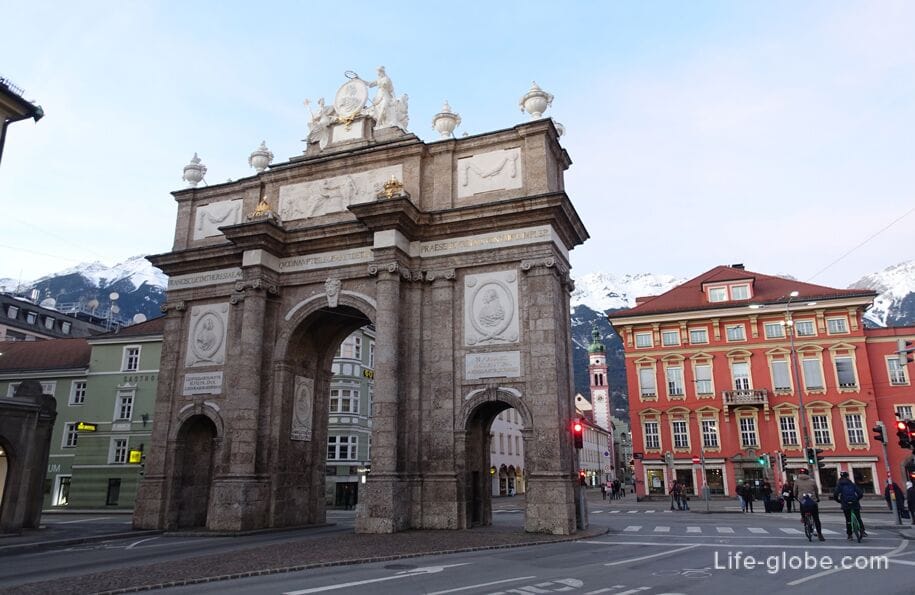
The arc de Triomphe, in a southerly direction, stretches a large area Wilten (Wilten), as well as the city centre, holds a considerable amount of interesting objects and spectacular sights. Read more about the area Wilten...
The 4-star STAGE 12 with a terrace and a modern bar, free Wi-Fi, free Parking, a Spa and a fitness centre with sauna, steam bath and gym.
In rooms: air conditioning, flat-screen TV, kettle and private bathroom with free toiletries and a Hairdryer. Some rooms have a Seating area.
Room rates may include Breakfast. Link to the hotel
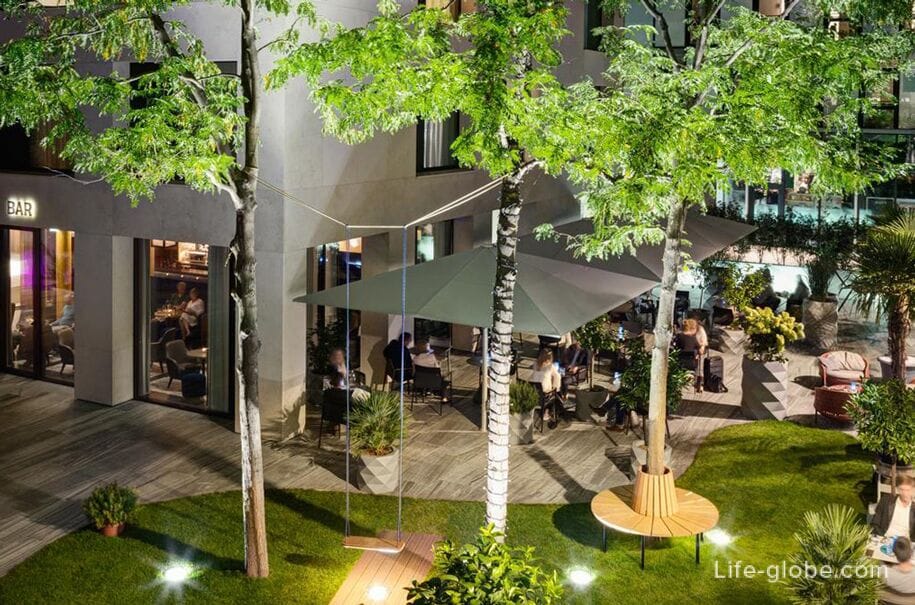
4-star hotel The PENZ family rooms, an American bar and a rooftop restaurant, free Wi-Fi and Parking.
In the rooms: safe, bathrobes, wooden or parquet floors and free toiletries.
Room rates may include Breakfast. Link to the hotel

The family-run 3-star hotel Goldene Krone Innsbruck with views of the triumphal arch and the Bergisel jump.
In the hotel: free Wi-Fi, a lobby bar and Parking.
Rooms with private bathroom, Desk and flat-screen satellite TV.
Room rates include Breakfast. Link to the hotel
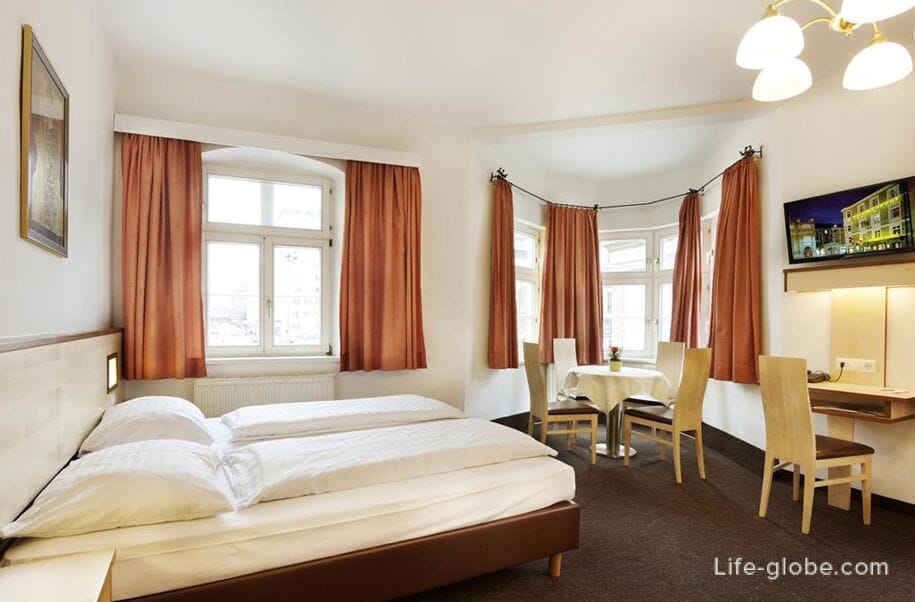
Apartments Triumphpforte, located in a historic building. The Windows offer views of the arc de Triomphe.
In the apartment: a bathroom and a kitchen with a dishwasher, oven and microwave. The link apartments
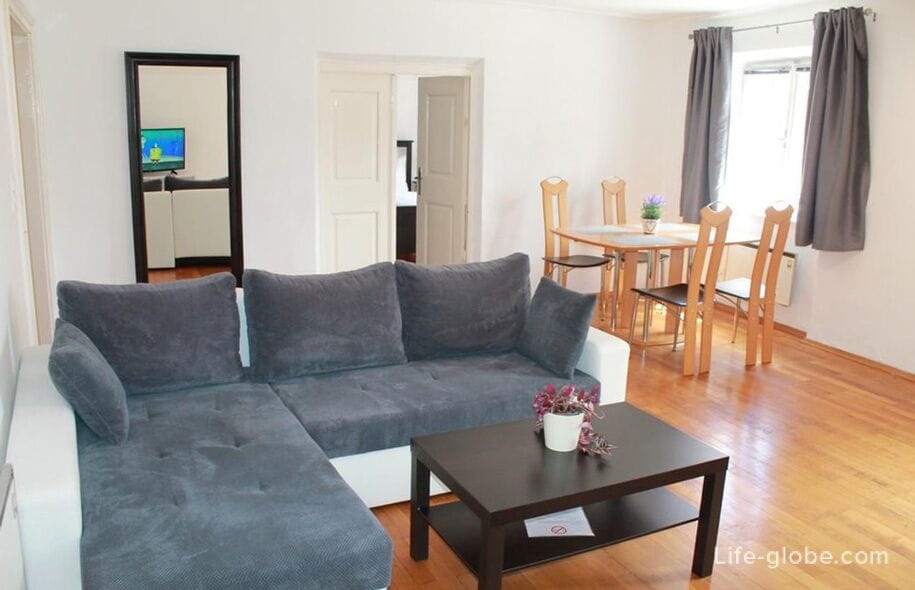
All accommodation in Innsbruck, including the historic centre and on street Maria-Theresia-Strasse, you can view and book here